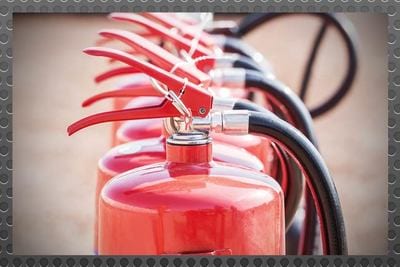- About Us
- Our Services
- Training Expertise
- Crisis Management for Business & Industry
- DOT PHMSA ALERT Rail Car Training
- Emergency Management
- Environmental & HAZMAT
- First Response & HAZWOPER
- Maritime Security
- OSHA Training/Confined Space
- RDPC
- Safer News Gathering
- Safer Ohio Schools Using Threat Assessment Management
- School Safety & Security
- Workplace Violence Prevention
- Courses
- Our Clients
- Media
When To Grab The Nearest Fire Extinguisher

Lately, Findlay All Hazards project managers have remarked on the number of requests for fire response training workshops. Several EHS professionals have recently inquired about their need for an effective in-house training workshop that assures that employees can control small fires, and that they know how to protect themselves and others regardless of whether the fire can be completely and quickly suppressed. Such training starts with recognition of a fire that cannot be managed by anyone other than a true first responder, versus one that is incipient (that is, fresh and controllable).
More specifically, OSHA uses the term “Incipient Stage Fire” and provides this long-standing definition: “A fire which is in the initial or beginning stage and which can controlled or extinguished by portable fire extinguishers, class II standpipe or small hose systems without the need for protective clothing or breathing apparatus.” The administration has also expanded that definition to include flame-control circumstances that are most safely approached with the aid of a self-contained breathing apparatus.
Incipient fires, particularly open-air flame incidents, are all-too-frequent events in industrial environments, and most can be easily diminished with hand-held extinguishers of the proper classification. But, as noted in a recent Occupational Health & Safety magazine article, some companies are not comfortable with their employees attempting to extinguish a fire on their own. They maintain policies requiring any employee who discovers any stage of fire to activate the nearest fire alarm and to immediately exit the building or area.
At first glance, that policy might seem short-sighted. Fire extinguishers are mandatory, so why not use them? But the concern of companies with such policies may not be completely unfounded. The results can be disastrous if an employee discovers an uncontrolled flame, chooses to fight it, and takes the wrong steps to do so. For example, having to retrieve a fire extinguisher from a distance can be calamitous, of course, as the fire might spread beyond simple control in the time needed to bring the extinguisher to the flame. Or the employee may not have the skills to recognize that the location of the fire is one that mandates the employee flee the area immediately – if, for example, the flame is very near containers of explosive chemicals.
And some companies may feel that their employee turnover rate is too high, and their risk of fire too low, to invest in fire response training for each member of their workforce.
Findlay All Hazards understands that all organizations and facilities are different, but still believes that such policies, as an absolute, may be the wrong choice. A well-trained employee can very often completely suppress a small fire, if the proper class of extinguisher is charged and within reasonable reach. Just as importantly, employees can be efficiently trained to recognize the nature of a fire and to make a quick decision about whether to “fight or take flight.”
Findlay is here to help EHS managers examine their policies and work with senior management to make changes where they are most beneficial to safety. Findlay All Hazards trainers will help you stage regular drills, include the use of SCBAs in fire response if appropriate, and create your own in-house fire response training that is time- and information-appropriate for any level of employee.
